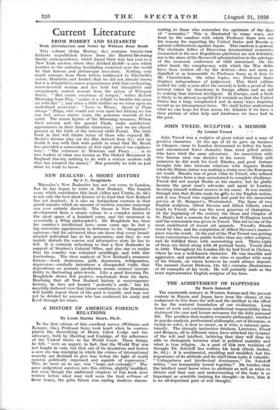JOHN TWEED, SCULPTOR : A MEMOIR By Lendal4Tweed John Tweed
was Sculptor of great talent and a man of positive character; At the age of 21 he gave up business in Glasgow, came to London determined to follow his bent, and encountered fewer obstaelei than most gifted artists who have tried the same adventure. An association with two famous men was decisive in his career. While still unknown he did work for Cecil Rhodes, and good fortune brought him into intimate relations with Auguste Rodin when the Balzac statue was making a storm over the European art world. Rhodes was of great value to, Tweed, whO refused to take orders from a man accustomed to complete obedience. Tweed.-did not accept' Rodin' as'his-master, but .lie gladly became the great man's- advbeirte and agent- 'London, devoting himself without reserve- to his cause. • It Was mainly through him that Rodin made his gifts to the English nation, and it was Tweed who organised and paid for the- memorial service at St. Margaret's, Westminster. The. fame of two English sculptors, Alfred Stevens and Alfred Gilbert, owed much to Tweed, who was the most generous, of champions. At the beginning of the century the Dean and Chapter of St. Paul's had a concern for the unfinished Wellington tomb and the commission was given to Tweed. This led to one of the most embittered of recent art quarrels. Tweed's friends stood by him, and the completion of Alfred Stevens's master- piece was the result. At the end of the War Tweed was getting more commissions from public bodies than any other sculptor, and he fulfilled then' with unremitting zest. Thirty-eight of these are listed along with 49 portrait busts. Tweed died in 1933. Throughout his London life he had lived in Chelsea, where he was a well-known character. He was irascible and aggressive, and quarrelled at one time or another with most -of his friends, on whom however he could always depend. The memoir (Lovat Dickson, 12s. 6d.) contains illustrations of 23 examples of his work. He will probably rank as the most representative English sculptor of his time. ,






































 Previous page
Previous page